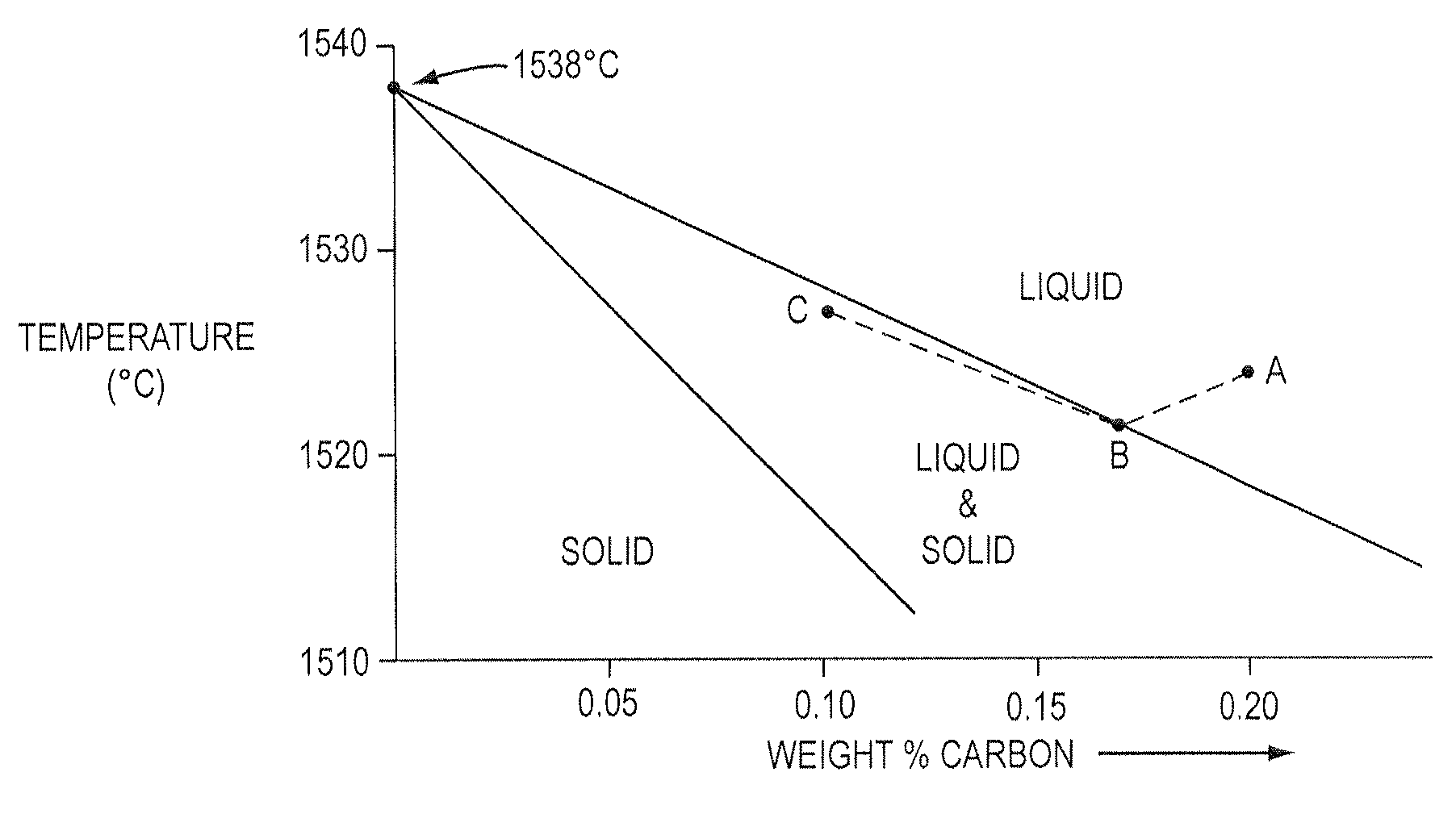Method of refining the grain structure of alloys
a grain structure and alloy technology, applied in the field of alloy grain structure refining, can solve the problems of liquid metallic solution turbulence, achieve the effect of high fraction solid and semi-solid alloys, reduce the amount of metal waste, and eliminate delay
- Summary
- Abstract
- Description
- Claims
- Application Information
AI Technical Summary
Benefits of technology
Problems solved by technology
Method used
Image
Examples
Embodiment Construction
[0014]The foregoing will be apparent from the following more particular description of example embodiments of the invention, as illustrated in the accompanying drawings in which like reference characters refer to the same parts throughout the different views. The drawings are not necessarily to scale, emphasis instead being placed upon illustrating embodiments of the present invention.
[0015]The invention generally is directed to a method of making liquid metal compositions containing a large number of solid particles per unit volume, without external heat removal. In one embodiment of the process, a melt of an alloy is formed in a vessel by raising the temperature of the alloy to at least its liquidus temperature. The liquidus temperature of an alloy is the maximum temperature at which solid particles (crystals) can coexist with the liquid melt in thermodynamic equilibrium. Above the liquidus temperature, the melt is homogeneous, containing no solid particles. Once the liquid melt h...
PUM
| Property | Measurement | Unit |
|---|---|---|
| weight percent | aaaaa | aaaaa |
| liquidus temperature | aaaaa | aaaaa |
| grain size | aaaaa | aaaaa |
Abstract
Description
Claims
Application Information
 Login to View More
Login to View More - R&D
- Intellectual Property
- Life Sciences
- Materials
- Tech Scout
- Unparalleled Data Quality
- Higher Quality Content
- 60% Fewer Hallucinations
Browse by: Latest US Patents, China's latest patents, Technical Efficacy Thesaurus, Application Domain, Technology Topic, Popular Technical Reports.
© 2025 PatSnap. All rights reserved.Legal|Privacy policy|Modern Slavery Act Transparency Statement|Sitemap|About US| Contact US: help@patsnap.com


